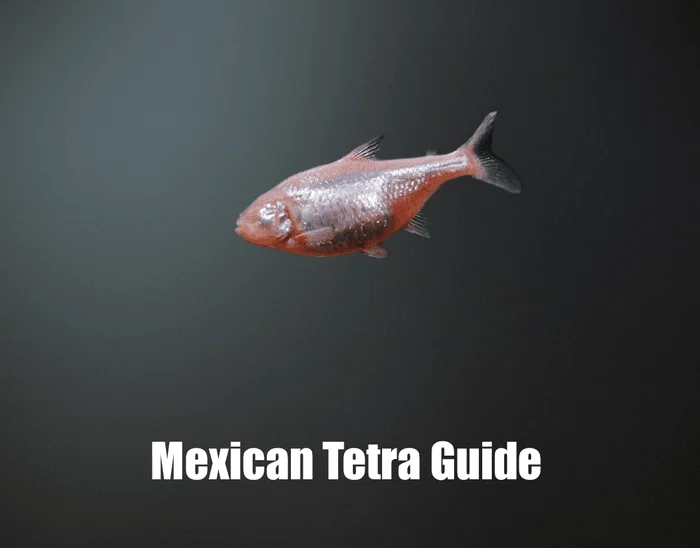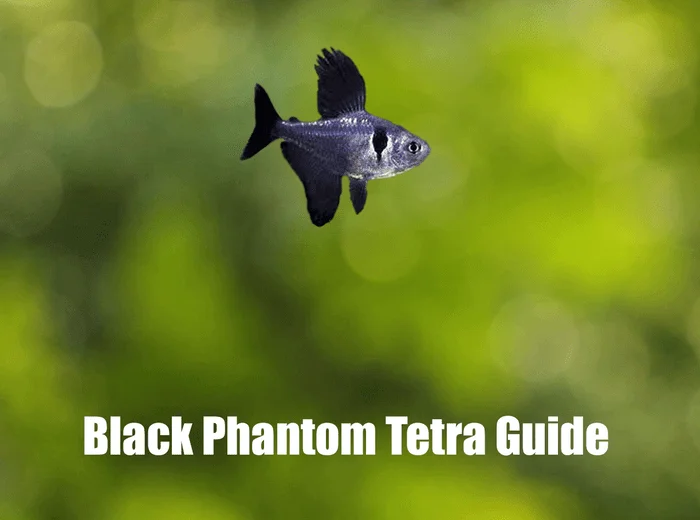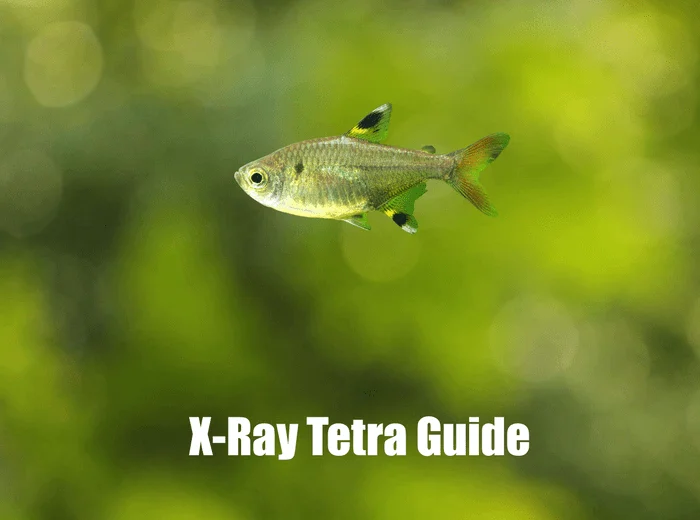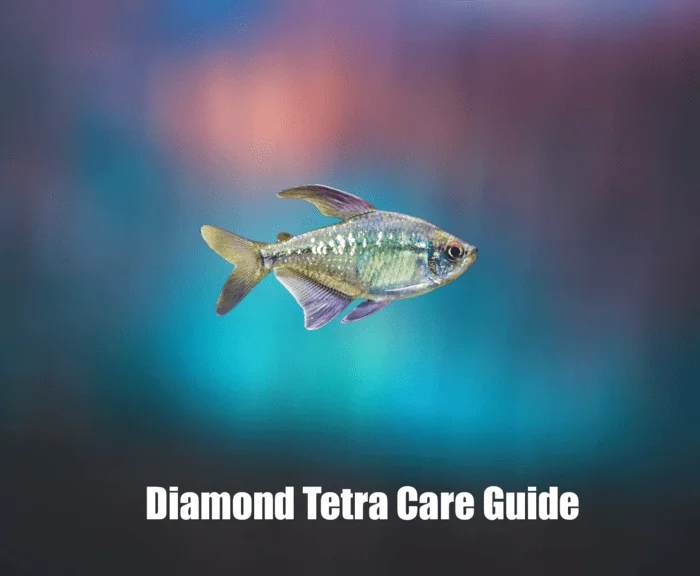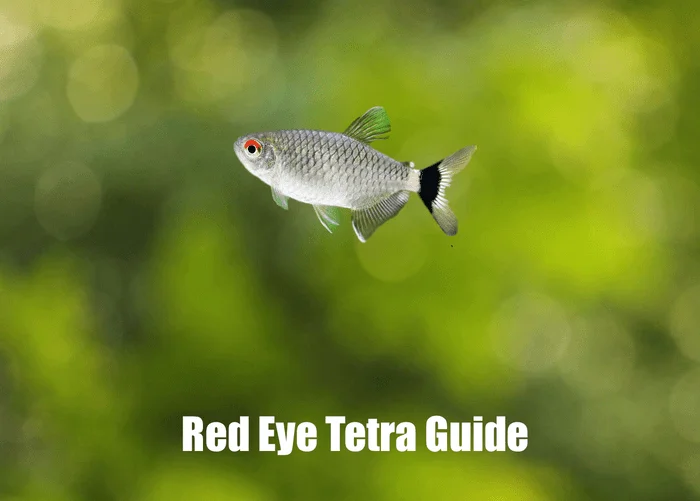Complete Care Guide for Black Skirt Tetras: Ensuring a Healthy Aquarium Environment
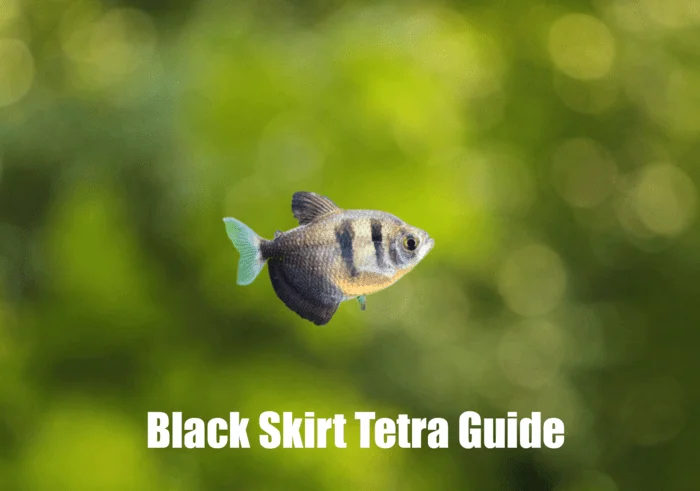
Introduction
Are you planning to add Black Skirt Tetra to your aquarium or looking for tips to care for them? If so, this comprehensive guide is tailored to you. As their name suggests these fish have a prominent black coloring on their dorsal fins and “skirts” (the anal and ventral fins). They have a silver-gray body with a semi-transparent quality and are a popular choice among aquarists. They are a robust fish as long as some basic requirements are met. This guide will provide you with all the necessary information to ensure your Black Skirt Tetras not only survive but flourish.
Understanding Black Skirt Tetra
Origin and Characteristics
The Black Skirt Tetra, scientifically known as Gymnocorymbus ternetz originating from the warm waters of South America, particularly found in the river basins of Paraguay, Guaporé, and Guaporé in Brazil, Bolivia, and Argentina. In the wild, they inhabit slow-moving waters, including rivers, streams, and flooded forests. They thrive in areas with dense vegetation and a soft, sandy bottom. These Tetra are small, peaceful fish, growing up to 3 inches in length. Lastly, they are easily recognizable by their translucent bodies with a black vertical stripe pattern and flowing black skirts.
Behavior and Tank Mates
Black Skirt Tetras are schooling fish and thrive in groups of five or more. They are generally peaceful and do well in a community tank with other non-aggressive species. Avoid housing them with larger, predatory fish. Some common and suitable tank mates for Black Skirt Tetras include:
- Corydoras Catfish: These are bottom dwellers and known for their peaceful nature. They help in keeping the tank clean by scavenging for food at the bottom.
- Mollies: Mollies are peaceful, and their size makes them a good match for GloFish Tetras. They come in various colors and can add more vibrancy to your tank.
- Guppies: With their vibrant colors and peaceful temperament, guppies can coexist harmoniously with GloFish Tetras. Just ensure that the tetras don’t nip the guppies’ fins.
- Platies: Like guppies, platies are colorful and peaceful. They are easy to care for and can be a good fit in a community tank.
- Dwarf Gourami: These are relatively peaceful and can add a different shape and size to the aquarium, making it more visually appealing.
- Harlequin Rasbora: Known for their striking color and peaceful nature, they make excellent companions for GloFish Tetras.
- Neon Tetras: Smaller than GloFish Tetras, neon tetras are peaceful and can add a different level of activity and color to the tank.
- Swordtails: Similar to platies and mollies, swordtails are peaceful and can coexist well with GloFish Tetras.
- Zebra Danios: They are hardy and active, and their playful nature can be a good complement to the more subdued GloFish Tetras.
- Bristlenose Plecos: Known for their algae-eating habits, they are peaceful and won’t bother other fish in the tank.
Remember, while choosing tank mates, consider factors like water parameters, size, temperament, and dietary needs to ensure a harmonious aquarium. Also, always introduce new fish gradually and monitor their interactions to ensure a peaceful environment. 🐠
Setting Up the Perfect Tank
Tank Size and Conditions
A 20-gallon tank or larger is recommended for a small school of Black Skirt Tetra but they will benefit from some more swimming room. These Tetra thrive in specific water conditions that mimic their natural habitat. Maintaining ideal water parameters is the key to ensuring their health and well-being in a home aquarium. Here’s a breakdown of their ideal water conditions:
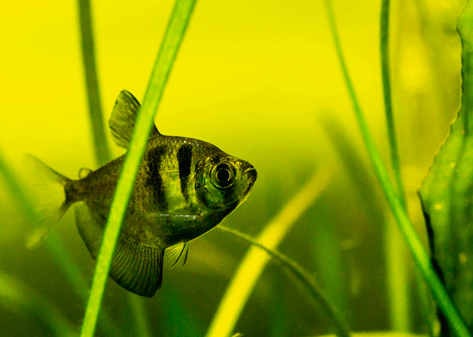
- Temperature: Black Skirt Tetra prefer a temperature range between 70°F to 85°F (21°C to 29°C). Within this range, they are most comfortable and active.
- pH Level: The ideal pH range for these Tetra is between 6.0 and 7.5. They do best in slightly acidic to neutral pH levels.
- Water Hardness: They are adaptable to a range of water hardness but generally prefer soft to moderately hard water, around 2 to 15 dGH.
- Water Quality: Like most fish, Black Skirt Tetra require clean and well-oxygenated water. Regular water changes (about 25% per week) are recommended to maintain good water quality. It’s crucial to remove any chlorine or chloramine from tap water before adding it to the tank.
- Nitrate Levels: Keeping nitrate levels low is important, as high levels can be harmful. Aim to keep nitrates below 20 ppm.
- Ammonia and Nitrite Levels: Both ammonia and nitrite should always be at 0 ppm. Even small amounts of these can be toxic to fish.
It’s important to use a reliable aquarium test kit to regularly monitor these water parameters. Sudden changes in water conditions can stress or harm your fish, so any adjustments should be made gradually. Maintaining stable water conditions is key to the health and longevity of your Black Skirt Tetra. 🌊
Lighting and Decor
- Moderate Lighting: Black Skirt Tetras thrive in moderately lit environments. Avoid overly bright lights as these fish are accustomed to dimmer, shaded waters in their natural habitat.
- LED Aquarium Lights: LED lights are a great choice. They offer a full spectrum of light, are energy-efficient, and don’t produce much heat.
- Day/Night Cycle: Maintain a consistent day/night cycle, mimicking natural light patterns. Usually, around 10-12 hours of light per day is sufficient.
- Plants: Live plants are highly recommended. They provide shelter, reduce stress, and replicate the Tetra’s natural environment. Good plant choices include Java Fern, Anubias, and Amazon Sword.
- Substrate: A dark-colored substrate can help mimic their natural riverbed environment and also makes their colors stand out more.
- Hiding Places: Provide hiding places with driftwood, rock caves, or artificial decorations. This helps in creating a stress-free environment for the fish.
- Open Swimming Space: While decor and plants are important, ensure there is ample open space for swimming, as Black Skirt Tetras are active swimmers.
- Background: A darker background can help the fish feel more secure and enhance their natural colors.
Diet and Nutrition
Feeding Habits
Black Skirt Tetras are omnivorous. A balanced diet including s, frozen or live brine shrimp, daphnia, and occasional vegetable supplements will keep them healthy.
Feeding Schedule
Feed them small amounts once or twice a day, being careful not to overfeed.
Health and Wellness
Breeding Tips
Breeding Black Skirt Tetras can be a rewarding experience, but it requires a bit of preparation and understanding of their breeding behavior. Here are some tips to help you successfully breed Black Skirt Tetras:
- Setting Up a Breeding Tank: Set up a separate breeding tank, about 10-20 gallons, with a sponge filter to avoid sucking up fry. The water in the breeding tank should mimic the ideal conditions for Black Skirt Tetras – a slightly acidic pH, soft to medium hardness, and a temperature of about 78°F to 80°F (25.5°C to 26.5°C).
- Spawning Environment: The breeding tank should have subdued lighting and be furnished with fine-leaved plants or a spawning mop for the fish to deposit eggs on. You can also use a mesh at the bottom of the tank to protect the eggs from being eaten by the parents.
- Selecting Breeding Pair: Choose healthy, mature fish (about 6-12 months old). Males are generally slimmer and more colorful, while females are plumper, especially when ready to breed.
- Conditioning the Breeders: Feed the breeding pair high-quality foods like brine shrimp, bloodworms, and daphnia to condition them for spawning. This helps increase the chances of successful breeding.
- Spawning Trigger: Perform regular water changes with slightly cooler water to simulate the rainy season, which often triggers spawning in their natural habitat.
- Observing Spawning Behavior: Spawning usually occurs in the morning. The female will scatter eggs among plants or on the tank substrate, and the male will fertilize them.
- Post-Spawning Care: After spawning, remove the parents to prevent them from eating the eggs. The eggs usually hatch within 24-36 hours.
- Caring for the Fry: Once hatched, the fry will feed on their yolk sacs for a couple of days. After this, they can be fed infusoria or commercially available liquid fry food, gradually moving to newly hatched brine shrimp as they grow.
- Regular Maintenance: Perform regular but gentle water changes in the fry tank to maintain water quality. Be cautious not to disturb the fry too much.
Remember, patience is key when breeding fish. It might take a few attempts before you see success. Keep a close eye on the water parameters and the health of both the adult fish and the fry to ensure a successful breeding experience. Good luck!
Common Health Concerns
Black Skirt Tetra are susceptible to the same health issues as other tetras, specifically ich and fungal infections. Proper tank management and water quality are crucial for their health. Learn more about taking care of your tank here.
Life Expectancy
With proper care, these tetras can live up to 5 years. Regular monitoring and maintenance of the tank environment are key to their longevity
Frequently Asked Questions
Black Skirt Tetras can grow up to 2 to 2.5 inches (5 to 6.4 cm) in length.
t is recommended to keep them in groups of at least 5 to 6 to promote natural schooling behavior and reduce stress.
They are generally peaceful but can display fin-nipping behavior, especially if not kept in adequate numbers or with long-finned fish.
Black Skirt Tetra Wrap Up
In conclusion, Black Skirt Tetra stand out as an intriguing species, bringing a touch of elegance and mystery to any freshwater aquarium. By following the recommendations provided in this care guide, you are taking a significant step toward ensuring a flourishing existence for these captivating fish. The journey of fishkeeping with Black Skirt Tetras is one of responsibility and reward, where the effort you invest in their care translates directly into the health and vitality of your aquatic pets.
The cornerstone of thriving fishkeeping lies in the establishment and maintenance of a stable, well-managed environment. This includes regular monitoring of water parameters to ensure they remain within ideal ranges for temperature, pH, and hardness. Equally important is the commitment to routine tank maintenance, including water changes and filter cleaning, to keep the environment clean and conducive to your fish’s health.
Feeding your Black Skirt Tetras a varied and balanced diet, providing ample space for swimming, and ensuring a peaceful tank community are also critical factors in their well-being. Their care requirements, while straightforward, demand attention and consistency, highlighting the importance of understanding the specific needs of the species.
Additionally, recognizing the value of a well-structured habitat—with plenty of hiding spots and plant life—can significantly enhance the quality of life for your Black Skirt Tetras. Such an environment not only mimics their natural habitat but also supports their health and stress levels, allowing their true colors and behaviors to shine.
Embracing these care principles will not only result in a vibrant and healthy life for your Black Skirt Tetras but will also enrich your experience as an aquarist. The beauty and serenity of a well-kept aquarium can bring immense satisfaction and peace, making the journey of fishkeeping with Black Skirt Tetras a fulfilling endeavor. Remember, the key to their success—and yours—lies in the dedication to providing a stable, nurturing, and well-maintained environment.
Share Your Tetra Experiences
Do you have any stories or tips about your Tetra tank? Share them in the comments below!
Help Others Discover This Guide
Navigate the Tetra in your tank with confidence. This guide is your pathway to creating a vibrant and healthy aquatic showcase. Enjoy the dazzling colors and lively nature of these unique fish!

